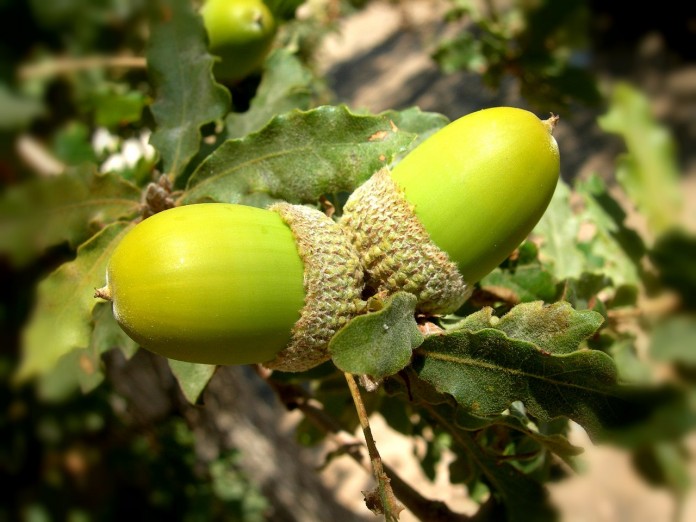Fall is my favorite time of the year. The days get shorter, temperatures get cooler and the leaves change color. With that said, keep in mind that ingestion of some types of leaves can lead to toxicity problems with livestock.
A couple of weeks ago, one of my colleagues addressed toxic trees and plants in pastures. I wanted to take that thought a step further and address special issues that may be encountered in pastures from a few species of trees. Some of these examples are more of a problem for horses but many can affect ruminants as well.
Maple
Leaves from red maple trees and likely those from other varieties such as sugar or silver maple can be toxic to horses. The leaves are not a problem when they are green, but when they are wilted, they have toxins. These toxins are present at natural leaf drop and will continue in dried leaves for about another four weeks. Storm damage and tree trimming can result in the same wilting leaf issues which can lead to toxicity problems.
Eating as little as 1.5 to 3 pounds can cause illness or even death. Even fewer leaves need to be ingested by miniatures or donkeys. This does not seem to be an issue with non-equine animals. Symptoms can include depression, increased breathing rate and dark brown urine.
Black locust
Leaves, twigs, bark and seeds of black locust are all toxic. Horses appear more sensitive to locust than most other grazing animals. When pastures are lush, animals will usually avoid eating this plant but in the fall, with short pastures, they may try some.
Symptoms can appear as quickly as one hour after ingestion. Weakness, lack of appetite, abdominal pain, paralysis and abnormal heart rhythms are reported as symptoms.
Buckeye. While we love our buckeye trees in Ohio, they are poisonous to livestock, including horses. It is not just the nuts that are a problem. New shoots, sprouts and husks are all poisonous. Horses sometimes like the new foliage in the spring, and you never know what a bored pony may try to eat when the nuts are on the ground in the fall. Colic is a common symptom in horses. Ruminants are definitely affected by this one too.
Oaks
Tannins found in the leaves, bark and acorns of oak trees can be toxic. Oaks are less of a problem in the fall than in early summer. Young leaves and green acorns contain the highest toxin levels. This is another one that may never cause a problem as many horses avoid eating oak leaves and acorns.
Japanese yew
While this is not a tree that should be growing near a pasture, I feel like I must mention the toxicity of this plant to any grazing animal. Japanese yews and many other ornamental plants can be highly toxic.
These shrubs are commonly grown in landscapes and some think that all those lush green trimmings should not be wasted, so occasionally they are dumped into a pasture. I have personally witnessed two incidents where this has happened and resulted in the death of multiple donkeys and cattle. It will likely result in death before any symptoms are noted.
This article is not intended to advocate for the removal of all these varieties of trees. From time to time, it is good to have a reminder to closely observe our animals and the pastures they are grazing.
While there may not seem to be a change in trees in and around the pasture from previous years, something as simple as introducing a new animal or a dry spell reducing the amount of forage, could affect what the animals decide to eat.
If you need help identifying trees or have other questions, please feel free to contact your local extension office.













